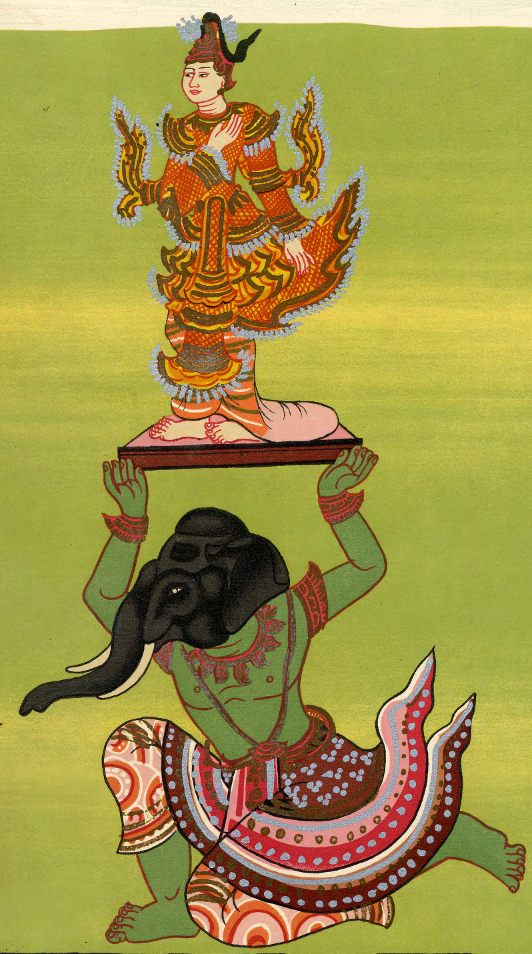Thonbanhla on:
[Wikipedia]
[Google]
[Amazon]
 Thonbanhla (, ; ) is the fifth of the official 37 nats in the Burmese pantheon. She is often associated with extraordinary beauty, tragedy, and divine transformation.
According to one legend, she was a native of Takunnwan, a
Thonbanhla (, ; ) is the fifth of the official 37 nats in the Burmese pantheon. She is often associated with extraordinary beauty, tragedy, and divine transformation.
According to one legend, she was a native of Takunnwan, a
 Thonbanhla (, ; ) is the fifth of the official 37 nats in the Burmese pantheon. She is often associated with extraordinary beauty, tragedy, and divine transformation.
According to one legend, she was a native of Takunnwan, a
Thonbanhla (, ; ) is the fifth of the official 37 nats in the Burmese pantheon. She is often associated with extraordinary beauty, tragedy, and divine transformation.
According to one legend, she was a native of Takunnwan, a Mon
Mon, MON or Mon. may refer to:
Places
* Mon State, a subdivision of Myanmar
* Mon, India, a town in Nagaland
* Mon district, Nagaland
* Mon, Raebareli, a village in Uttar Pradesh, India
* Mon, Switzerland, a village in the Canton of Grisons
* A ...
village, and was described as "beautiful in three ways within one day." Because of this, she was given to King Duttabaung of Sri Kshetra (Pyay). However, the king’s queen and concubines, jealous of her beauty, spread false stories claiming that Thonbanhla was actually very ugly and so large that she could not pass through the city gates. As a result, she was left outside the city walls, ignored by the king, and eventually died of grief. She then became a nat spirit.
Another version holds that Thonbanhla was originally from the village of Kansun Nyaung in Hanthawaddy. Because of her three-times-daily beauty transformation, her parents presented her to King Duttabaung. As in the first version, the palace women grew jealous and spread lies about her size, leading the king to abandon her outside the city, where she died of sorrow and became a nat.
A separate narrative identifies Thonbanhla as the younger sister of the nat Maung Tint De (also known as Maung Tintala). After her family was involved in a dispute, she fled to Rakhine, where the Rakhine king adopted her as his daughter. Later, she married King Smim Htaw
Smim Htaw (, ; died 27 March 1553) was a pretender to the Hanthawaddy throne, and the last king in the line of the Hanthawaddy dynasty. He ruled a small region around Pegu as king from 1550 to 1552.
An ex- Buddhist monk, and a son of King Bin ...
Yama of Utthala and gave birth to a daughter, Shin Mi-hnè. On a journey to Tagaung to visit relatives, she fell ill and died at Tapa Taung Ri, west of Inwa, and was then deified.
Some legends state that after her death, her daughter Shin Nemi (also called Shinnae Mi) missed her so deeply that she too died as a child in Daung Ri village, becoming a nat herself.Myanmar Encyclopedia, Volume (13) Three Seven Kings
Depiction
Thonbanhla is typically portrayed standing atop anogre
An ogre (feminine: ogress) is a legendary monster depicted as a large, hideous, man-like being that eats ordinary human beings, especially infants and children. Ogres frequently feature in mythology, folklore, and fiction throughout the world ...
who bends over a dais supported by an elephant
Elephants are the largest living land animals. Three living species are currently recognised: the African bush elephant ('' Loxodonta africana''), the African forest elephant (''L. cyclotis''), and the Asian elephant ('' Elephas maximus ...
. Her hair is braided into a topknot. She places her right hand on her chest and lets her left arm fall gracefully by her side. In some depictions, she stands on a giant elephant-shaped seat, with a detailed headdress and ornamental features symbolizing her nobility and sorrow.
References
References
{{Burmese nats *05 Burmese goddesses Deified Burmese people Deified women